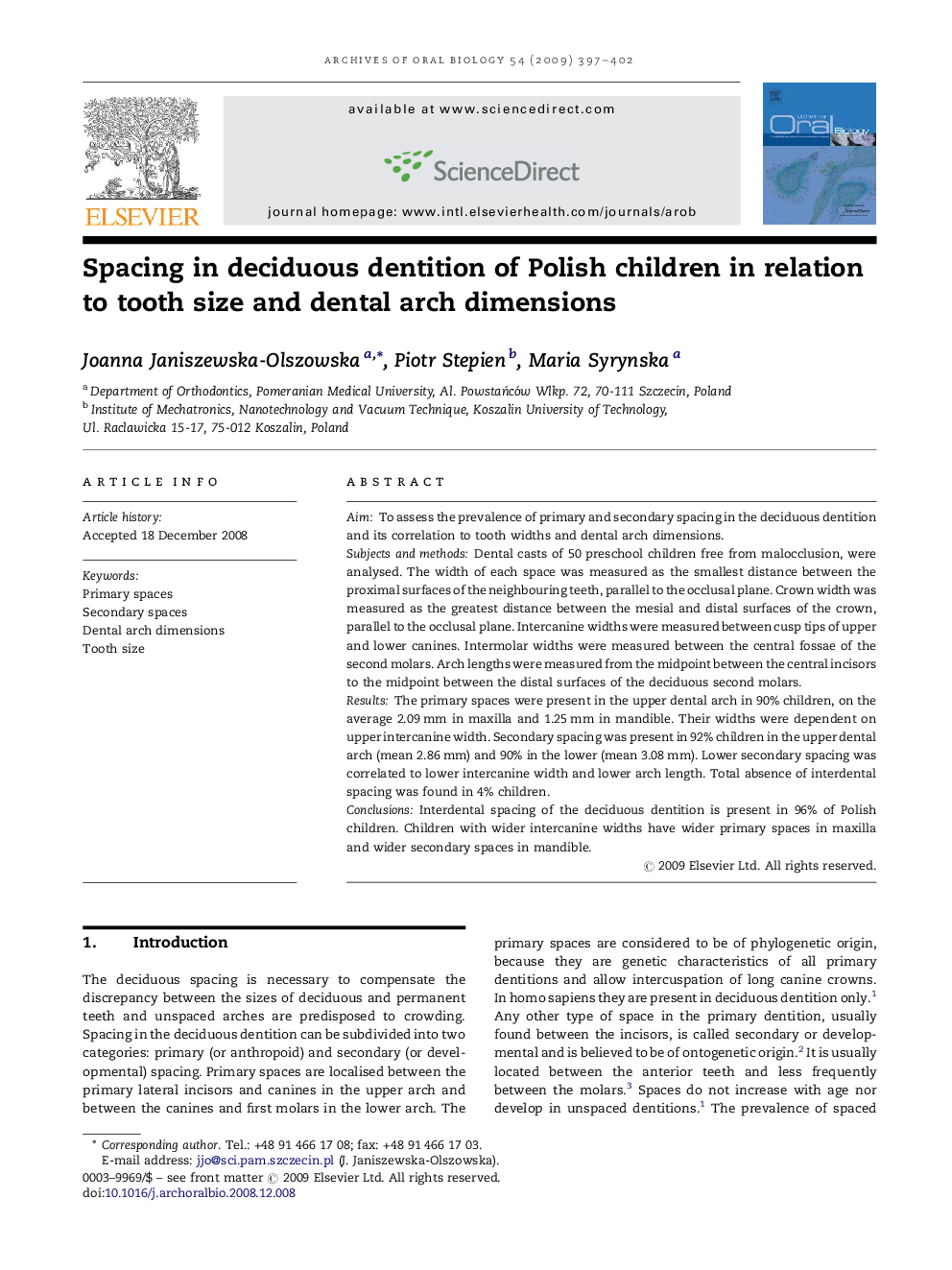| Article ID | Journal | Published Year | Pages | File Type |
|---|---|---|---|---|
| 3121214 | Archives of Oral Biology | 2009 | 6 Pages |
AimTo assess the prevalence of primary and secondary spacing in the deciduous dentition and its correlation to tooth widths and dental arch dimensions.Subjects and methodsDental casts of 50 preschool children free from malocclusion, were analysed. The width of each space was measured as the smallest distance between the proximal surfaces of the neighbouring teeth, parallel to the occlusal plane. Crown width was measured as the greatest distance between the mesial and distal surfaces of the crown, parallel to the occlusal plane. Intercanine widths were measured between cusp tips of upper and lower canines. Intermolar widths were measured between the central fossae of the second molars. Arch lengths were measured from the midpoint between the central incisors to the midpoint between the distal surfaces of the deciduous second molars.ResultsThe primary spaces were present in the upper dental arch in 90% children, on the average 2.09 mm in maxilla and 1.25 mm in mandible. Their widths were dependent on upper intercanine width. Secondary spacing was present in 92% children in the upper dental arch (mean 2.86 mm) and 90% in the lower (mean 3.08 mm). Lower secondary spacing was correlated to lower intercanine width and lower arch length. Total absence of interdental spacing was found in 4% children.ConclusionsInterdental spacing of the deciduous dentition is present in 96% of Polish children. Children with wider intercanine widths have wider primary spaces in maxilla and wider secondary spaces in mandible.
